In the intricate world of knitting, precision, and attention to detail are paramount. To achieve flawless patterns and intricate designs, knitters rely on a crucial tool known as a “PM” or “Place Marker.”
These unassuming little tools play a significant role in guiding needlework, ensuring stitches are placed accurately, and simplifying complex patterns.
Whether you’re a seasoned knitting enthusiast or just starting your crafting journey, understanding the importance of place markers is essential.
This introduction will unravel the mysteries behind PM in knitting, delving into its various types, uses, and the indispensable role it plays in creating beautiful, flawlessly executed knitwear.
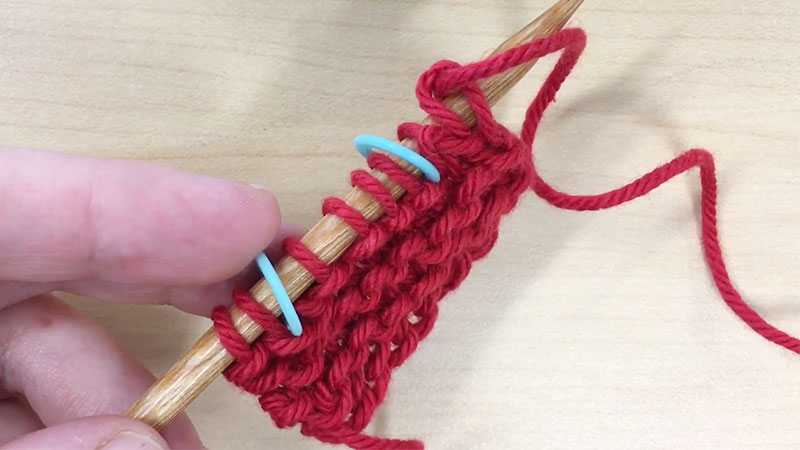
What Is PM in Knitting? -The Exact Abbreviation
In knitting, “PM” stands for “Place Marker.” A place marker is a small, often removable, tool or piece of yarn that is used to mark specific points in your knitting project.
These markers serve as reference points to help you keep track of where you are in a pattern, where to make increases or decreases, or where to change colors.
They are especially handy when working on complex patterns, intricate lacework, or projects with a large number of stitches.
Place markers come in various forms, such as simple plastic rings, locking markers, or even contrasting loops of yarn.
They help knitters maintain accuracy and prevent mistakes, ensuring that the finished project turns out as intended.
How to Use Place Marker in Knitting
Place markers in knitting are useful tools that help you keep track of specific points in your knitting project, such as stitch counts, pattern repeats, or where to make certain increases or decreases.
They come in various forms, including plastic rings, locking markers, and even bits of yarn.
Here’s how to use them:
Materials you’ll need:
- Knitting needles
- Yarn
- Stitch markers
Steps to use place markers in knitting:
Identify the Need for a Marker
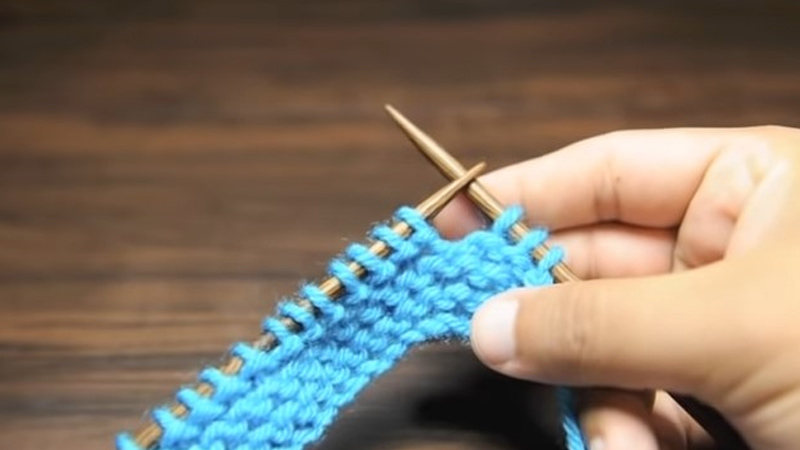
Determine where in your knitting pattern you need to place a marker. This could be for various reasons, such as marking the beginning of a round in circular knitting, indicating the center stitch in a lace pattern, or showing where to increase or decrease.
Choose Your Marker

Depending on your preference and the specific application, choose the type of marker that suits your needs.
You can use commercial stitch markers or create your own by cutting a small piece of contrasting yarn and tying it into a loop.
Position the Marker
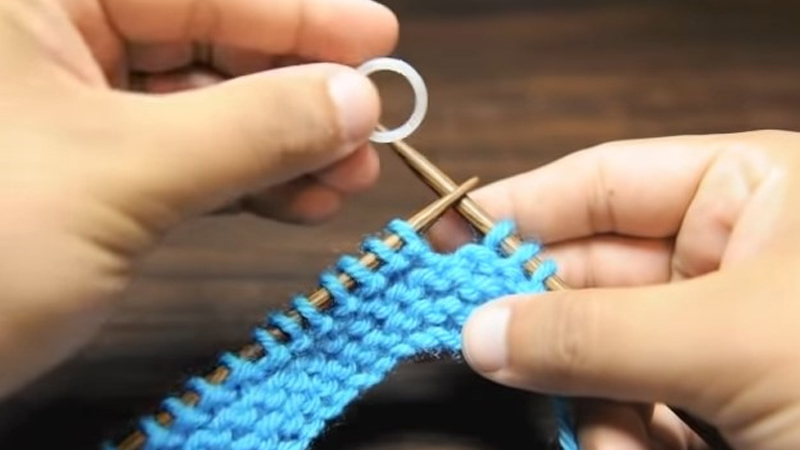
Once you’ve identified the spot where you want to place the marker, gently slip it onto the right-hand needle from the left side. The marker should sit between two stitches on the needle, not on the needle itself.
Continue Knitting
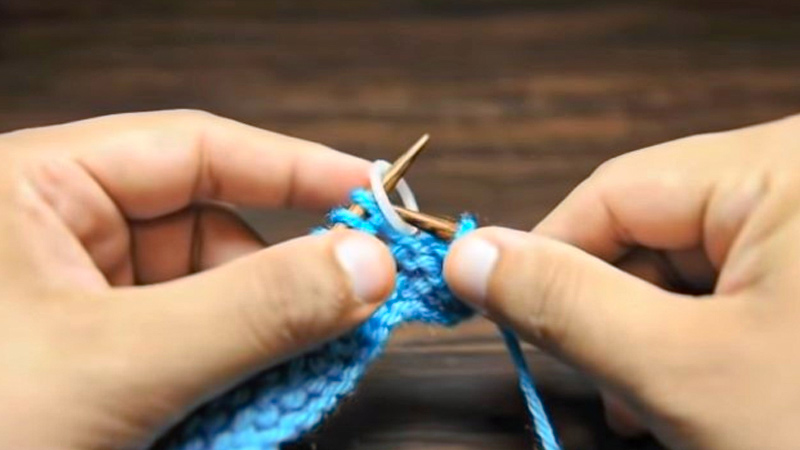
After placing the marker, continue knitting as usual. When you reach the marker in subsequent rows or rounds, simply slide it from the left-hand needle to the right-hand needle, making sure not to knit it into the work. The marker should move up with your knitting.
Interpreting the Marker
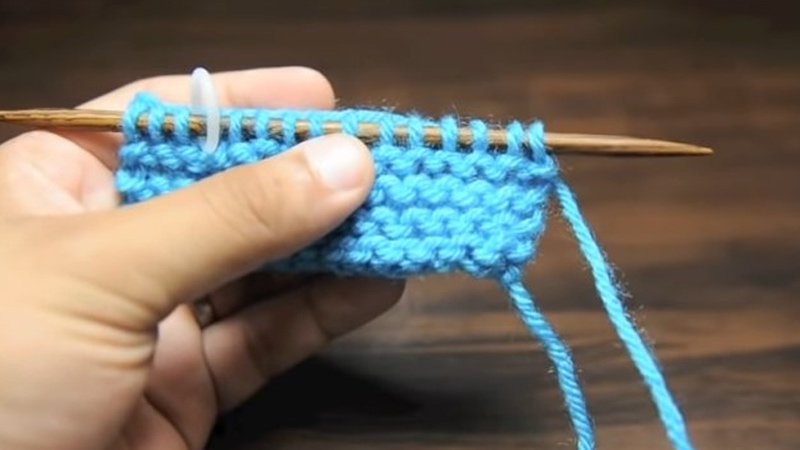
As you continue knitting, you can reference the marker to know when to perform specific actions, such as increases, decreases, or pattern repeats.
For example, if you placed a marker to mark the center of a shawl, you’ll know that this is where you need to work your lace pattern.
Removing the Marker
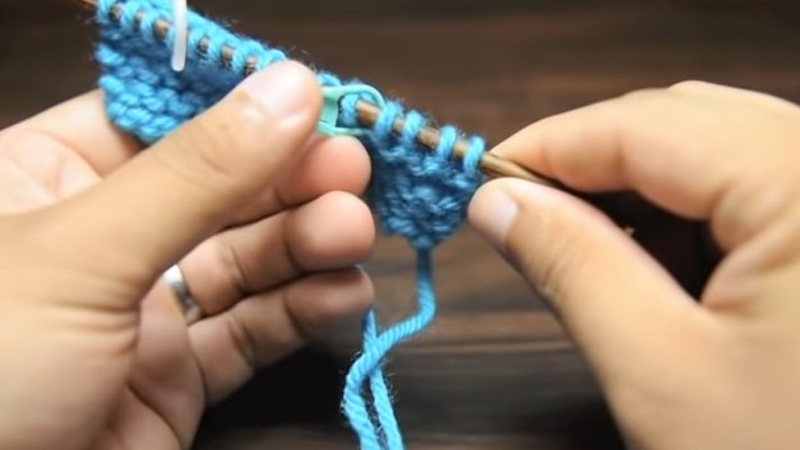
If you no longer need the marker (e.g., when the pattern says to remove it or it’s serving its purpose), simply slide it off the needle and set it aside for future use.
Free Knitting Abbreviations Master List
In the world of knitting, patterns are like secret codes, and understanding the abbreviations used within them is key to unlocking beautiful and intricate designs.
To help you decipher these knitting patterns with ease, we’ve compiled a comprehensive list of common knitting abbreviations.
Whether you’re a beginner just starting your knitting journey or an experienced knitter looking for a quick reference guide, this “Free Knitting Abbreviations Master List” is here to assist you.
Common Knitting Abbreviations:
| Abbreviation | Meaning |
| k | Knit |
| p | Purl |
| yo | Yarn Over |
| k2tog | Knit 2 Together (Decrease) |
| p2tog | Purl 2 Together (Decrease) |
| st(s) | Stitch(es) |
| inc | Increase |
| dec | Decrease |
| rep | Repeat |
| pm | Place Marker |
| sm | Slip Marker |
| sl st | Slip Stitch |
| RS | Right Side |
| WS | Wrong Side |
| CO | Cast On |
| BO | Bind Off |
| tbl | Through the Back Loop |
| MC | Main Color |
| CC | Contrasting Color |
| kfb | Knit Front and Back (Increase) |
| pfb | Purl Front and Back (Increase) |
| ssk | Slip, Slip, Knit (Decrease) |
| ssp | Slip, Slip, Purl (Decrease) |
| C4B | Cable 4 Back |
| C4F | Cable 4 Front |
| M1 | Make One (Increase) |
| k3tog | Knit 3 Together (Decrease) |
| p3tog | Purl 3 Together (Decrease) |
| BO (bind off) | Bind Off |
| CO (cast on) | Cast On |
| kwise | Knitwise (insert needle as to knit) |
| pwise | Purlwise (insert needle as to purl) |
What Is the Difference Between PM and SM in Knitting?
In knitting, two essential markers in knitting are “PM” and “SM,” which stand for “Place Marker” and “Slip Marker” respectively.
These seemingly similar abbreviations serve distinct purposes in your knitting journey.
To help you differentiate between the two, we’ve created a table outlining their meanings and functions.
PM vs. SM in Knitting:
| Abbreviation | Meaning and Function | Usage in Patterns | Example in Pattern |
| PM (Place Marker) | PM instructs you to insert a stitch marker into the knitting to mark a specific point or stitch in your work. This marker helps you keep track of where you placed it and can be useful for counting rows, indicating stitch changes, or designating a significant point in the pattern. You’ll often encounter “PM” when a pattern requires you to work a set of stitches and then mark a spot for future reference. | Used to indicate the beginning of a pattern repeat, mark the center stitch, indicate a color change, or highlight a crucial stitch count. | “K20, PM, P10, K15” – In this pattern, “PM” marks the boundary between knitting and purling stitches. |
| SM (Slip Marker) | SM, on the other hand, directs you to slip a previously placed stitch marker from the left needle to the right needle without knitting it. This is typically done when you reach the marker during your knitting process. Slipping the marker allows you to maintain its position in your work, marking the boundary between different sections or repeats in your pattern. SM is particularly useful when working in the round or to indicate transitions between sections of a project. | Used to denote the end of a pattern repeat, separate sections in knitting in the round, or highlight a stitch where something specific needs to happen (e.g., a decrease or increase). | “K2, P2, SM, K2” – In this pattern, “SM” indicates the end of a ribbed section. |
FAQS
What does “pm” mean in knitting?
“PM” in knitting stands for “place marker.” It is an abbreviation used to indicate where you should insert a stitch marker into your knitting project to mark a specific point or stitch for reference.
Is “pm” a common knitting abbreviation?
Yes, “pm” is a common knitting abbreviation used to make it easier for knitters to follow patterns and keep track of their work.
How is “pm” used as a knitting term?
In knitting, when you encounter “pm” in a pattern or instructions, it means you should place a stitch marker on the knitting needle to mark a designated spot in your project.
What is an example of “pm” in a knitting pattern?
Certainly! In a knitting pattern, you might see something like this: “K10, pm, P5, pm, K15.”
In this case, “pm” is used to instruct you to knit 10 stitches, place a marker, purl 5 stitches, place another marker, and then knit 15 stitches.
Conclusion
In knitting, “PM” is a simple yet crucial abbreviation that carries significant importance for every knitter.
Standing for “Place Marker,” it symbolizes a pivotal moment in the crafting process, where precision and attention to detail are paramount.
PM allows knitters to mark specific stitches or points in their project, serving as a navigational beacon through intricate patterns and ensuring accuracy in shaping and design.
It’s a reminder that knitting is both an art and a science, where each stitch and marker contributes to the creation of a beautiful and functional piece.
So, whether you’re a novice or an expert, “PM” is a constant reminder of the meticulous craftsmanship and creativity that knitting entails.
Leave a Reply